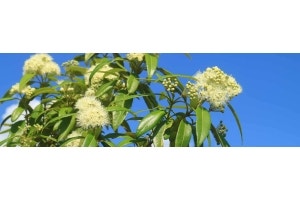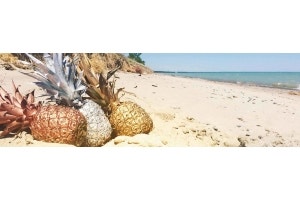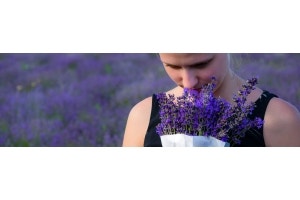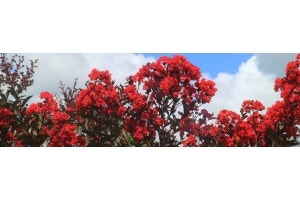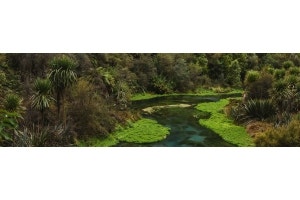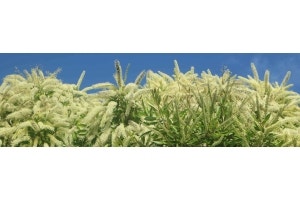
Why do we need to prune hydrangea?
Pruning at the right time of year helps change the appearance and health of plants.
We want our garden plants to work hard, be healthy, and look their very best all year. Pruning helps achieve that.
This also works for other plants - woody, shrubby, summer-flowering plants, that flower on the stems they grew earlier in spring.
- mophead and lacecap hydrangea
- buddleia
- spiraea
- crepe myrtle (this can also be left unpruned to grow into a tree)
- coppiced gums grown for young foliage
Pruning Steps

1. When To Prune?
When's the best time to prune your summer-flowering hydrangea?
If you live in a frost-free area,hydrangeas and other summer-flowering shrubs can be pruned in late autumn or early winter. This saves time as you can deadhead and prune all in one go.Some gardeners prefer to leave the old dead flowerheads on over the winter. Some snip off the flowerheads as they dry, for house decoration, and leave the pruning until spring.
It's up to you!
In frosty or snowy areas,
it's safer to leave the pruning until the frosts have finished. Pruning encourages a plant to put out fresh new shoots, and pruning too early in a frosty area can mean those vulnerable new shoots get damaged by cold.Besides, the old flowers can look ornamental with a dusting of frost or a hat of snow!


2. Assess The Situation
Here's a neglected hydrangea bush looking very sorry for itself at the end of the flowering season.
This bush grows in a frost-free garden, so it still has last year's leaves. There's new shoots already starting to emerge in lighter green, beneath the old shrivelled leaves and dead flowerheads. Time to prune!In colder areas, where hydrangeas lose their leaves in winter, the new growth is much easier to see. You'll spot fat paler green leaf-buds starting to emerge along the stems, as winter turns to spring.Like this oakleaf hydrangea, putting out new leaves in early spring.


3. Where To Start?
It can daunting to know where to start when pruning for the first time. So start with the easy bits!
First, cut out all the dead flowerhead stems. Work from the outside of the shrub, inwards.If your hydrangea is large or densely-growing, cut back as far as you can reach in - you can always do a second cut afterwards, a bit lower.Cut with sharp secateurs at a low angle, just above the 'node' - this is the point where the new leaves emerge from the main stem.You can see how this looks, below. Leave about three or four new leaf-buds on each stem, in this case. We left ours a little longer, six to seven buds, because it's not congested; it grows all year round; and we can prune it through the season if we need to.




4. Carry On Pruning
Keep cutting the old flowering stems back in the same way, until they are all removed.
Now do the same for any stems that didn't flower.
If your hydrangea is 'leggy' - with long weak spindly stems - or congested in the centre, with lots of criss-crossing branches, you can cut these back even further, closer to the ground.
Step back every now and them to take a look at the overall shape and outline.You want a nice rounded shape, with stems ready to grow upright in plenty of room.


5. New Shoots
Pruning does something called 'breaking the apical dominance'.
This is a technical term which means the growth hormones that would normally flow right to the ends of every stem, now have nowhere to go. So they double back, and emerge along the length of each stem.That causes side shoots, leaf-buds, and flower buds to break out along the stems, rather than only at the ends.
That means more flowers for you!

What Happens If You Prune At The Wrong Time?
Sometimes you've just got to get in there with the secateurs. Maybe a tradie needs access and the hydrangea is blocking their way. Maybe you need to move the shrub to a different location. Maybe you couldn't get to the garden at the right time.The absolute worst that will happen, if you have to prune, deep in the middle of winter, in frost or snow, is that the cold might get in and kill some stems, or maybe the plant. You can always protect your freshly-pruned hydrangea by throwing a net curtain or fleece over the top to keep the frost off.
More likely, the worst outcome if you prune hydrangea or other summer-flowering shrubs at the wrong time of year, is that you might lose a year's flowers.
You prune off the coming buds and the plant needs to wait a year to make more. Not too terrible!
So don't stress too much about pruning - think of it like a rejuvenating makeover haircut for your flowering shrubs!





















